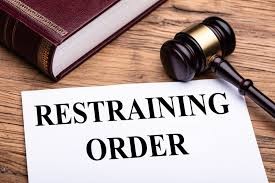The Common Defenses Against Restraining Orders

San Diego is a beautiful city in California. It is known for its beaches, sunny weather, and friendly people. But just like in any other city, legal issues can sometimes come up between people. One common issue is a restraining order.
This is a court order that stops someone from contacting or going near another person. While restraining orders are meant to keep people safe, sometimes they are filed unfairly or based on false claims. In such cases, getting help from a San Diego restraining order lawyer can make a big difference.
If someone has been wrongly accused, they have the right to defend themselves. Knowing the common defenses against restraining orders can help people understand what to do and how to protect their rights.
Lack of Evidence
One of the most common defenses is that there is not enough evidence. The person asking for a restraining order must prove that they are truly in danger or being harassed.
If they cannot show clear proof, like messages, witness statements, or past police reports, the court may not approve the order. A good defense can show that the claims are weak or not supported by facts.
False Accusations
Sometimes, restraining orders are filed out of anger or revenge. This can happen during breakups, divorces, or family disputes. The person filing the order might lie or exaggerate the situation to get the other person in trouble. If someone can show that the accusations are false through messages, phone records, or witness statements, it can help the judge see the truth.
No Threat or Harm
To get a restraining order, the other person must show that they feel threatened or unsafe. If there is no real threat or harm, then the order might not be fair. For example, if two people simply argued but no one was hurt or threatened, that is not usually enough for a restraining order.
Misunderstanding or Miscommunication
Sometimes, what looks like harassment or stalking is really just a misunderstanding. Maybe someone called or messaged the other person for a simple reason, and it was taken the wrong way. In these cases, showing proof of what really happened can help. Texts, emails, or even witnesses can show that the person did not mean to bother anyone.
Alibi or Proof of Absence
If someone is accused of showing up or contacting the other person at a certain time, but they can prove they were somewhere else, that’s a strong defense. For example, work records, security cameras, or people who saw them can show that the claims are not true.
Violation Was Not Intentional
Sometimes a person might be accused of breaking a restraining order by accident. Maybe they were at the same store or event without knowing the other person was there. If it was not on purpose, the court may understand. It helps to show that there was no bad intention.
Key Takeaways
- A restraining order can protect people, but sometimes it is filed unfairly.
- Common defenses include lack of evidence, false claims, and misunderstandings.
- Showing proof and telling your side clearly is very important.
- If accused, never ignore the order; always go to court and explain your side.
- Getting help from a restraining order lawyer can make the process easier and improve your chances of success.
